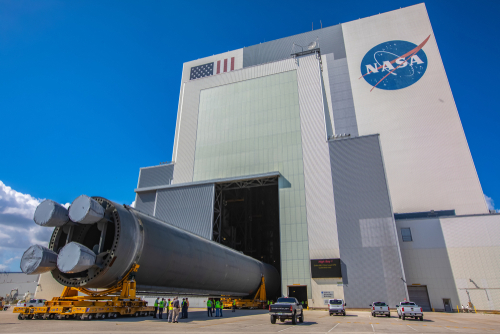NASA is gearing up for a significant transition from the International Space Station (ISS) to private space stations as the ISS approaches its planned retirement in 2030. This move marks a new chapter in space exploration, aiming to foster a robust commercial presence in low Earth orbit (LEO).
The shift is driven by NASA's Commercial Low Earth Orbit Destinations (CLD) program, which has already seen substantial investment. Recently, NASA awarded nearly $100 million in additional funding to commercial partners, including Blue Origin and Voyager Space, to develop new orbital platforms. Blue Origin's Orbital Reef project received an additional $42 million, while Voyager Space's Starlab project secured an extra $57.5 million.
India and USA Join Forces for Historic Mission to ISS
ISRO and NASA have announced a groundbreaking collaboration to send Indian astronauts to the International Space Station (ISS). The Human Space Flight Centre (HSFC) has signed a Space Flight Agreement with Axiom Space Inc. to… pic.twitter.com/ZJhZaY7KfK
— Manish Purohit (@purohitmanish) August 2, 2024
These commercial space stations promise to offer advanced capabilities and greater flexibility than the ISS. For instance, Sierra Space's Large Integrated Flexible Environment (LIFE) habitat, part of the Orbital Reef project, is designed to expand significantly once in orbit, providing a much larger volume than the rigid ISS modules. Similarly, Axiom Space plans to send its first commercial module to the ISS by 2026 as a precursor to an independent station.
The transition poses several challenges, including technical costs, scheduling risks, and regulatory issues. John Mulholland, Boeing's program manager for the ISS, emphasized the complexities involved in ensuring a smooth handover to commercial platforms.
Dear NASA & ISS
There have been 24 different Solar Eclipses since your International Space Station has been in orbit.
You haven’t recorded a single one.
Why? pic.twitter.com/qt97MQAy8Y
— Concerned Citizen (@BGatesIsaPyscho) April 8, 2024
Additionally, the need for increased funding for the United States Deorbit Vehicle (USDV) underscores the logistical hurdles of safely decommissioning the ISS.
Beyond the technical and financial aspects, there are significant regulatory and liability questions to address. As private entities take on the ownership and operation of crewed habitats in orbit, new policies and frameworks will be necessary to manage trade decisions, liability, and compliance with international treaties like the Outer Space Treaty.
Despite these challenges, the potential benefits are substantial. The development of private space stations is expected to reduce costs for NASA and enable the agency to focus resources on deep space exploration. Furthermore, a diverse range of commercial partners, including international collaborators like the European Space Agency, is anticipated to drive innovation and expand human activity in space.
This transition is seen as a pivotal step towards the long-term goal of establishing permanent, economically sustainable human communities beyond Earth. With continued support and investment, private space stations are poised to become the new hubs of research, business, and international cooperation in space.




